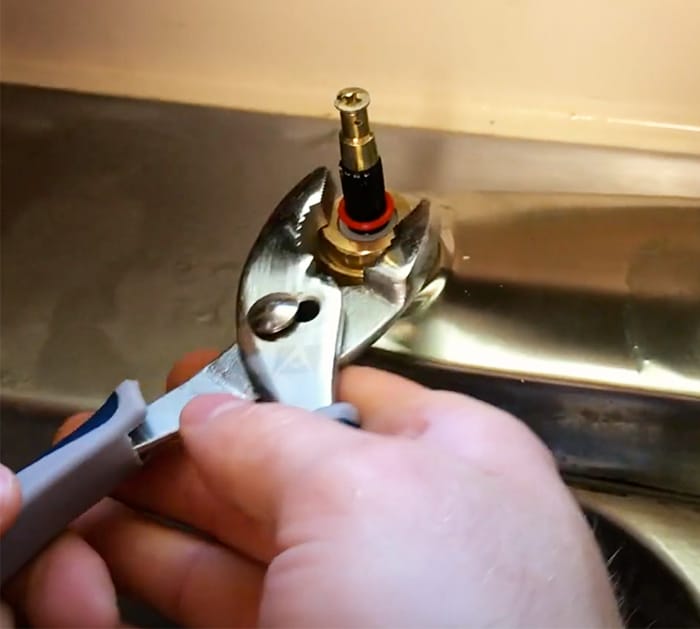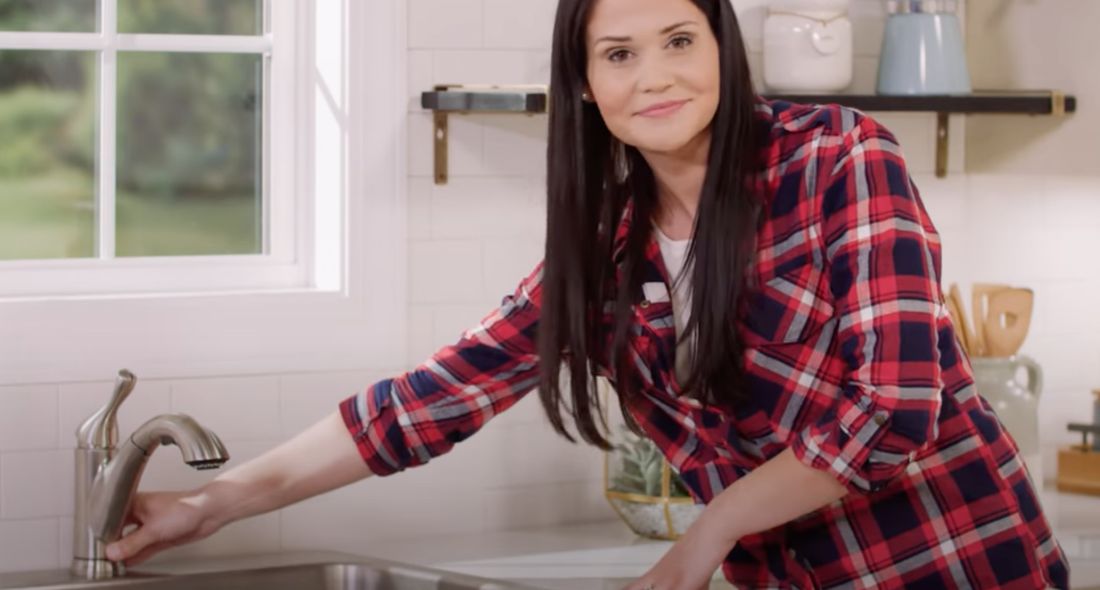What It's Important to Fix a Faulty Faucet
What It's Important to Fix a Faulty Faucet
Blog Article
The writer is making a few good annotation about Why Are My Faucets Dripping (And Can I Fix It Myself)? overall in this content directly below.

Trickling faucets might feel like a minor aggravation, however their influence exceeds simply the annoyance of the audio. From wasting water to incurring unneeded financial costs and health threats, disregarding a dripping faucet can lead to various repercussions. In this post, we'll look into why it's crucial to resolve this common household issue promptly and effectively.
Waste of Water
Environmental Influence
Leaking faucets contribute significantly to water wastage. According to the Environmental Protection Agency (EPA), a single faucet leaking at one drip per second can squander more than 3,000 gallons of water per year. This not only strains water sources yet additionally impacts ecological communities and wild animals based on them.
Financial Expenses
Boosted Water Expenses
Beyond the environmental impact, trickling taps can pump up water expenses significantly. The built up wastage with time equates into greater energy expenses, which could have been stayed clear of with prompt repair work.
Potential Home Damage
In addition, extended dripping can bring about damage to components and surface areas surrounding the tap. Water build-up can cause discoloration, rust, and even architectural issues if left neglected, leading to additional repair work costs.
Health and wellness Issues
Mold And Mildew and Mildew Development
The continuous presence of dampness from a dripping tap creates an ideal atmosphere for mold and mildew and mildew development. These fungis not only jeopardize indoor air high quality but likewise pose health and wellness risks, especially for individuals with respiratory problems or allergic reactions.
Waterborne Illness
Stationary water in dripping taps can come to be a breeding ground for microorganisms and other virus, increasing the danger of waterborne conditions. Impurities such as Legionella bacteria prosper in stationary water, potentially causing serious health problems when consumed or inhaled.
DIY vs. Expert Fixing
Advantages and disadvantages of Do It Yourself Repair
While some might attempt to repair a leaking tap themselves, DIY repair work include their very own collection of challenges. Without appropriate expertise and devices, DIY attempts can worsen the concern or lead to incomplete repair work, extending the trouble.
Advantages of Hiring an Expert Plumber
Employing an expert plumber makes certain that the underlying cause of the dripping tap is attended to properly. Plumbing professionals have the knowledge and devices to identify and fix faucet problems effectively, saving time and reducing the danger of additional damage.
Step-by-Step Guide to Repairing a Dripping Faucet
Tools Needed
Before attempting to repair a dripping faucet, gather the needed devices, including an adjustable wrench, screwdrivers, replacement parts (such as washers or cartridges), and plumber's tape.
Usual Tap Issues and Their Solutions
Recognize the sort of faucet and the particular issue causing the drip. Common issues include worn-out washing machines, rusty shutoff seats, or malfunctioning O-rings. Refer to producer instructions or on-line tutorials for detailed support on repair services.
Preventive Measures
Regular Upkeep Tips
To avoid dripping taps, do routine maintenance such as cleansing aerators, evaluating for leaks, and replacing damaged components quickly. Additionally, think about installing water-saving tools or updating to much more efficient components.
Value of Prompt Repairs
Addressing trickling faucets as soon as they're seen stops further water waste and potential damages, ultimately conserving both water and money in the long run.
Effect On Residential Property Value
Assumption of Well-Maintained Residential Property
Maintaining a residential or commercial property in good condition, consisting of dealing with maintenance concerns like leaking taps, enhances its regarded value and charm among prospective customers or renters.
Impact on Resale Value
Features with well-kept plumbing fixtures, consisting of faucets, command greater resale worths in the realty market. Resolving dripping taps can add to a positive perception throughout home examinations and settlements.
Environmental Obligation
Specific Contribution to Conservation
Taking duty for fixing leaking taps straightens with broader efforts towards water preservation and environmental sustainability. Every individual's actions collectively make a considerable influence on preserving precious resources.
Lasting Living Practices
By focusing on punctual repairs and embracing water-saving routines, people add to sustainable living techniques that profit both present and future generations.
Conclusion
Dealing with a leaking tap surpasses plain convenience; it's an important step toward saving water, lowering economic prices, and securing wellness and building. Whether through DIY repairs or professional support, acting to repair leaking faucets is a little yet impactful method to promote responsible stewardship of sources and add to a much healthier, a lot more lasting future.
Most Common Reasons for a Leaky Faucet and How to Stop the Drip
Whether it’s your kitchen faucet leaking or a bathroom faucet leaking, one leaky faucet can waste anywhere from three to 30 gallons of water every single day. If the constant drip-drip-drip doesn’t get your attention, your water bill will. The good news is that, by following a few simple steps, chances are pretty good you can fix the problem yourself.
Why is it dripping?
Before you start taking things apart, let’s break down some of the most common causes of a leaky faucet.
Bad O-ring.
A cartridge is a valve that controls the flow of water into the faucet spout. On cartridge faucets there’s an O-ring—the little disc attached to the stem screw that holds the faucet handle in place. If it’s loose or worn-out, it can cause your sink handle to leak. Of course, the cartridge itself could be worn out. If that’s the case, make sure you replace it with the exact same kind.
Corroded valve seat.
The valve seat connects the faucet and the spout. If the leak seems to be coming from the spout, it might be because a buildup of water sediment has corroded the valve seat.
Worn-out washers or seals.
A leaky spout could be caused by a bad washer that rests against the valve seat. It’s just a matter of time before friction takes its toll. It could also be the wrong size washer or one that’s been installed incorrectly. Water sediments can also corrode inlet and outlet seals.
Water pressure.
If the faucet only drips now and then, or when you turn the handles a certain way, you should probably check your home’s water pressure.
Loose or broken parts.
The adjusting ring and packing nuts in the stream screw can become loose over time, causing your sink handle to leak. Try tightening or replacing the packing nut. If the leak is coming from the pipes underneath the sink, you probably have a broken pipe or fitting. If that’s the case, you should definitely call a plumber.
Know your faucet.
Faucets come in a variety of types. Each one has its own assembly—and its own possible causes of leaks. Learning about the four most common kinds of faucets will help you know how to take them apart and make any repairs.
How to stop a leaky faucet
Fixing that leaky faucet doesn’t have to take a lot of time, money, or expertise. It’s usually a simple matter of replacing a worn-out washer or gasket, a loose O ring, or another part. Chances are really good you can do this yourself if you follow these simple steps.
Shut off the water.
Before you tackle the faucet, cut off the water supply to the sink. There should be one valve for hot and one for cold. Hand-turn them clockwise with your hands till they close. If there are no valves under the sink, head to the basement and shut off the main water supply to the house. Then turn on the faucet until it empties out the water that’s still in the line and you’re ready to start. It’s a good idea to cover the sink drain with a plug or a rag so you don’t lose any small pieces and parts while you’re working.

We were guided to that report on 4 Common Reasons for a Leaky Faucet from an acquaintance on our other website. Make sure you take a moment to distribute this blog if you enjoyed it. Thank you for being here. Come back soon.
Report this page